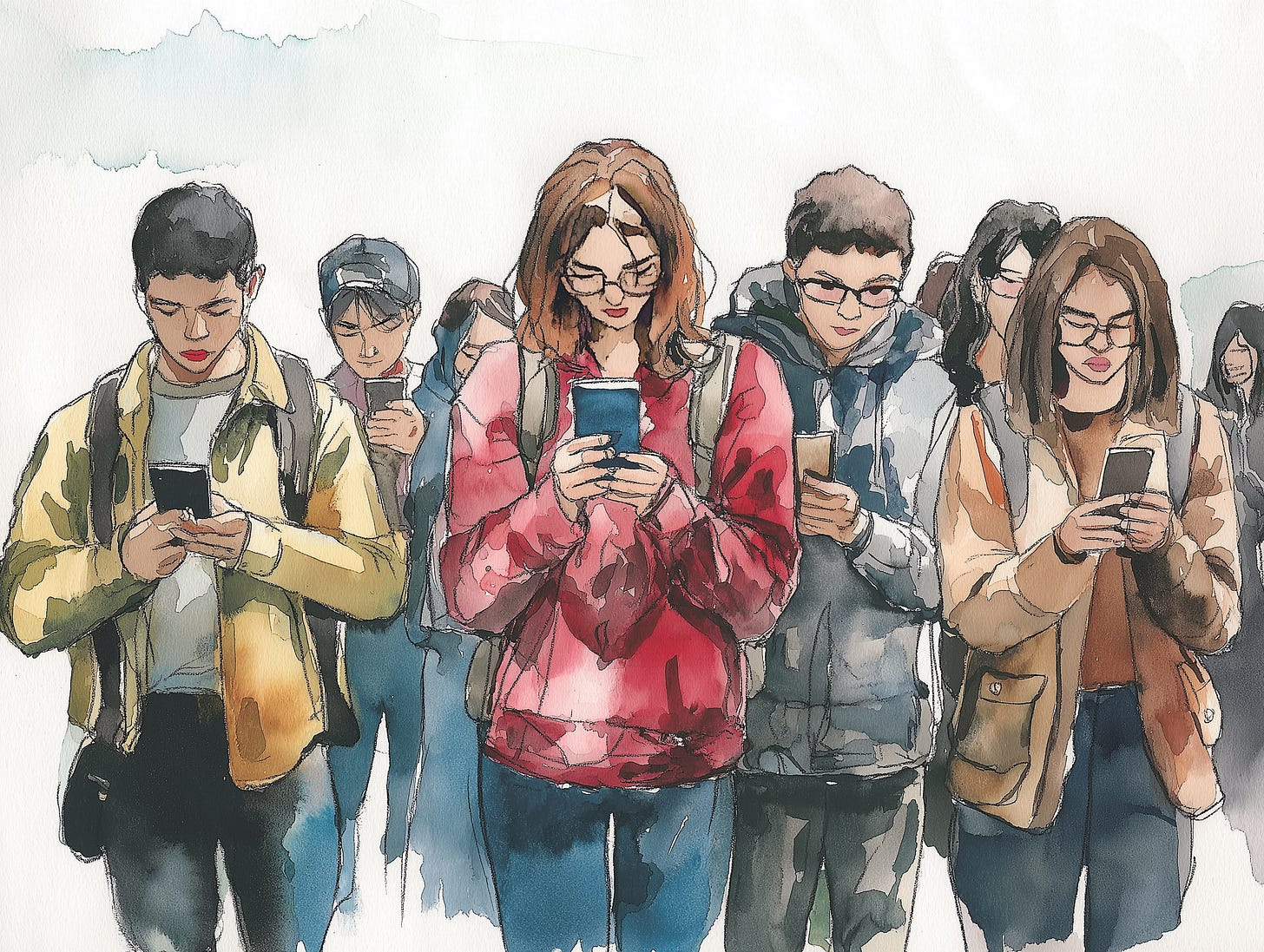Negative Aura: Gen Z and the Gamification of Outrage
Is a generation trained with points and badges capable of acting on principle?
If you’ve spent time around teenagers and twenty-somethings lately, you may have heard them using the terms “plus aura” and “minus aura” or “negative aura.” Roughly equivalent to “cool” and “uncool,” but rooted more in the social currency of attention and approval, this slang reflects the pervasive gamification of virtually every aspect of today’s youth culture.
Gamification – the use of video-game-like elements such as points, badges, and achievements – is ubiquitous in modern educational software, social media apps, and entertainment platforms. The approach is popular among software developers because it is effective in driving short-term engagement. Unfortunately, the long-term effects on users are quite harmful.
Intrinsic vs. Extrinsic Rewards
For over a century, behavioral researchers have known that reward-based learning is the key to shaping behavior. Put simply: we do more of what makes us feel good. When those good feelings emerge from within oneself (like a sense of accomplishment for achieving a goal, or personal satisfaction for learning a new skill), they are referred to as “intrinsic rewards.” When they come from external sources, like good grades, gold stars, and achievement badges, they are referred to as “extrinsic rewards.”
Clearly, gamification is based on extrinsic rewards. And that’s a big problem, because research has shown that using extrinsic rewards to motivate children undermines their ability to take action based on intrinsic rewards. For example, children who are given points and stickers for reading books become less likely to enjoy reading for its own sake. Giving kids rewards for reading doesn’t teach them to focus on reading; it teaches them focus on getting rewards.
Incidentally, this unintended consequence applies to virtually any form of instant gratification or visible metric, including grades. This is why, in every generation, many bright, self-motivated preschoolers become bored, apathetic elementary students who do the bare minimum required to earn decent grades.
But the gamification trend has made the situation far worse. Today, everything from social interaction to walking has been gamified with digital ratings and participation streaks. As a result, we now have a generation of young people motivated almost entirely by extrinsic rewards, rather than by core principles or the intrinsic value of what they’re doing.
The Role of Outrage
An often-overlooked problem with gamification is that whoever hands out the rewards decides what behavior is reward-worthy. Outside of school, rewards are often measured in likes, follows, shares, and other indications of peer attention and endorsement that comprise “aura.” Because of this, children who have been conditioned to focus on extrinsic rewards become young adults who are highly susceptible to peer pressure and prone to attention-seeking behavior.
As every middle-schooler knows, the easiest way to get attention is through behavior that is crude or antisocial. Broadly speaking, this is nothing new: every generation grew up with the class clown, the class flirt, and the class troublemaker – students who acted out in various ways to get attention. But while this used to be viewed by other kids as somewhat “desperate” or anomalous, acting out to get attention is now not only normalized, it is incentivized by social media algorithms that amplify emotionally-charged, inflammatory, and transgressive behavior.
Of course, not all attention-seeking behavior is rewarded by gaining aura. Appearing clumsy, foolish, or insincere is often regarded as negative aura. Because of this, outrage – especially performative outrage – has become one of the most socially rewarding and algorithmically-endorsed forms of attention-seeking behavior for Gen Z. By combining the self-righteous certainty of youth with social validation and the endorsement of powerful and well-funded but purportedly counter-culture organizations like BLM and Students for Justice in Palestine, young people have found that social activism is an effective way to gain aura, even though many of them have virtually no understanding of the issues they are denouncing.
While previous generations of protesters risked their reputations and social status to fight for ideals they deeply believed in, many members of Gen Z are doing the opposite: they are enhancing their reputations and social status by jumping on a bandwagon of peer-approved outrage.
This troubling phenomenon begs the question: has relentless gamification crippled Gen Z’s ability to act – or even think – authentically?
What’s Next?
In the short-term, gamification works well for educators, software developers, and social media platforms. It exploits the principles of reward-based learning to keep young people engaged and compliant. But the long-term impact it has on society is of grave concern. Not only does it train children to do whatever they’re told in order to earn extrinsic rewards, it prioritizes mindless, attention-seeking behavior over principled action.
To address this issue, parents, teachers, and young people could work together to reshape our environment into one that prioritizes intrinsic motivation, core values, and long-term goals. Adults can lead by example, choosing to act in accordance with personal beliefs rather than social pressure. They can also demonstrate a willingness to work toward long-term goals and pursue continuous improvement, even when these efforts don’t yield immediate benefits.
Parents and educators can encourage intrinsic motivation by celebrating genuine effort and persistence, through tactics such as praising children’s willingness to work hard and challenge themselves, rather than just the grades they earn. If rewards must be used, ones that foster internal motivation can be chosen. For example, instead of rewarding reading with ice cream or stickers, a child who finishes a book can be rewarded with another book.
At the same time, members of Gen Z can empower themselves by recognizing and resisting attempts to manipulate their behavior. Badges, stats, and social media metrics don’t indicate success or achievement; they only indicate behavior that aligns with the interests of the companies running the online platforms.
By working together, people of all ages can rediscover the fulfillment of intrinsic rewards. Devoting consistent effort to becoming physically, mentally, and spiritually stronger feels good on its own; it doesn’t require a smart watch counting your steps, a graph that indicates how many modules of something you’ve completed, or an electronic character who makes you feel guilty until you log into its app.
It won’t happen overnight, but with an increased awareness of, and intentional shift away from, the crutch of external validation, members of Gen Z will see for themselves that the best way to gain a genuinely positive aura is not by feigning outrage or competing for attention, but through meaningful action rooted in genuine values.






look at it from their perspective... if you are even a decade older, you remember a world in which ubiquitous internet was not quite there yet, which implied enjoying a real life in reality. by the time they were old enough most of their parents were sticking devices in their hands the way our parents dumped us in front of televisions. you take the technology for granted. worse for them, they think they understand the technology and every time there's another dick pick, naked teen scandal it's clear they don't have a fucking clue.
we have been barely able to figure out what this new dimension of information proliferation implies and the idiots chasing digital dreams foist social media on us. now we're all fucked. and they'll bare the brunt of it. i can choose to walk away. they don't know how to.
Excellent points.
I'm lucky to be old enough to instinctively resist gamification; I lasted not even a day on Duolingo, starting to learn my fifth language. I hated the way it treated me like a toddler.